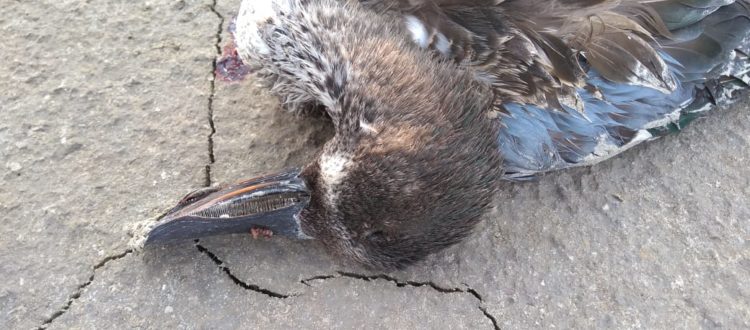Wildlife Emergency as Thousands of Birds Die in Sambhar Lake
Sambhar Lake, 18 November 2019: A tragedy of epic proportions unfolded at Sambhar Lake, Rajasthan last week. It all started with regular birders reporting deaths of hundreds of birds, many of these of migratory species that quickly escalated to thousands. This unprecedented wildlife emergency called for swift action even when the cause of such mass scale deaths was unknown.
While thousands of dead birds were collected and buried (17000 at last count), local rescuers started bringing in those that were found alive and our senior veterinarian Dr Disha Sharma joined the team immediately. The birds were initially taken to Jaipur for treatment but to save on transit time, WTI in collaboration with Raksha, a local organisation set up a temporary treatment facility to Kachroda Forest Nursery, Phulera.
The cause of mass scale deaths is still to be ascertained though initial diagnosis pointed to avian botulism (Source: Apex Center for Animal Disease investigation, monitoring and surveillance, Rajasthan University of Veterinary and Animal sciences, Bikaner) but our teams are doing their best to save as many lives as they can. Symptoms witnessed included wing movement freeze rendering them unable to fly, followed by leg paralysis with gasping before the birds pass out. Freshwater birds have not been affected.
With an unknown cause of such mass scale deaths, it is critical to create enclosures and aviaries to house the birds recovering after veterinary interventions. Artificial ponds have been created for waterfowl and aviaries for many other species. A few critically ill birds were also given infra-red rays.
Good rainfall has resulted in a large number of water bodies that have attracted a huge number of migratory birds to this landscape. Common coot, Northern shovelers, Kentish plover, Black winged stilt, Common teal, lesser flamingo, Little Stint, Ruff are a few species admitted for treatment and more rescued birds are still arriving. The team had so far rescued 480 birds of which 186 succumbed to death before treatment. As on today, the temporary rescue centre at Kachroda has around 290 birds showing healthy signs of recovery while the forest department prepares new aviaries to prepare them for release at another safe location.
[acx_slideshow name=”deathbird”]
There is another set of people who have the onerous task of picking up dead birds as they comb through the area and it can be anybody’s guess how many more would have died in the water or in other parts of this region that search parties have not yet reached.
Under Rapid Action Project, we support local organisations to deal with such wildlife emergencies, without delay ensuring quick action and appropriate scientific response. Our Emergency Relief Network comprises organisations and individuals who are the first responders in times of wildlife emergencies. You can help support our work to save non-human lives by contributing to a fund that helps us deal with such wildlife emergencies without delay. Click here to donate.









